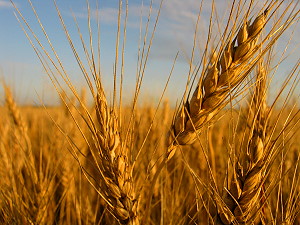 Northwest Region Crop Report Prepared by: Manitoba Agriculture
Northwest Region Crop Report Prepared by: Manitoba Agriculture
September 22, 2020 |
Northwest Region
A cool start to the week followed by warm dry conditions allowed for good harvest progress in the Northwest region. Early in the week overnight temperatures dipped well below zero, resulting in heavy morning frost but daytime temperatures were close to 25○C by the end of the week. There were scattered intermittent showers on Sunday night but harvest operations continued on Monday.
Cereals are generally ripe and ready for harvest when moisture and weather permit. Ninety percent of the spring cereals are harvested, with the exception of some oats that need additional time to fully ripen. Spring wheat harvest is nearly complete around Roblin, approximately 85% complete around Swan River and 50 to 60% at The Pas. Reported spring wheat yields range from 90 bu/acre down to 60 bu/acre.
The canola is drying well, with roughly 90% of the swathed crop harvested at Roblin, and 40 to 50% combined at Swan River. There remains standing canola that is almost ready to straight combine. The staginess through the growing season has affected canola quality and yields, which range from 40 to 60 bu/acre. The flax crop is ripe with a start to harvest.
Soybeans suited to the area are drying down nicely, but moisture is still too high. Some long-season varieties at PCDF are not at all close to maturity. Soybeans and lentils remain standing. Fieldwork on harvested fields is well underway.
Producers continue to bale straw. Second cut alfalfa hay and late seeded greenfeed crops are being harvested and nitrates remain a concern in these greenfeed crops. Although chopping of corn silage has started in more advanced fields in the region, producers are reminded to wait for the whole plant moisture to reach the correct level for harvest. Some corn crops that were immature at the time of frost will likely see quality and dry matter losses. Pastures are in fair to good condition for this time of year. Livestock water supply is sufficient for the most part but water levels are lower.
